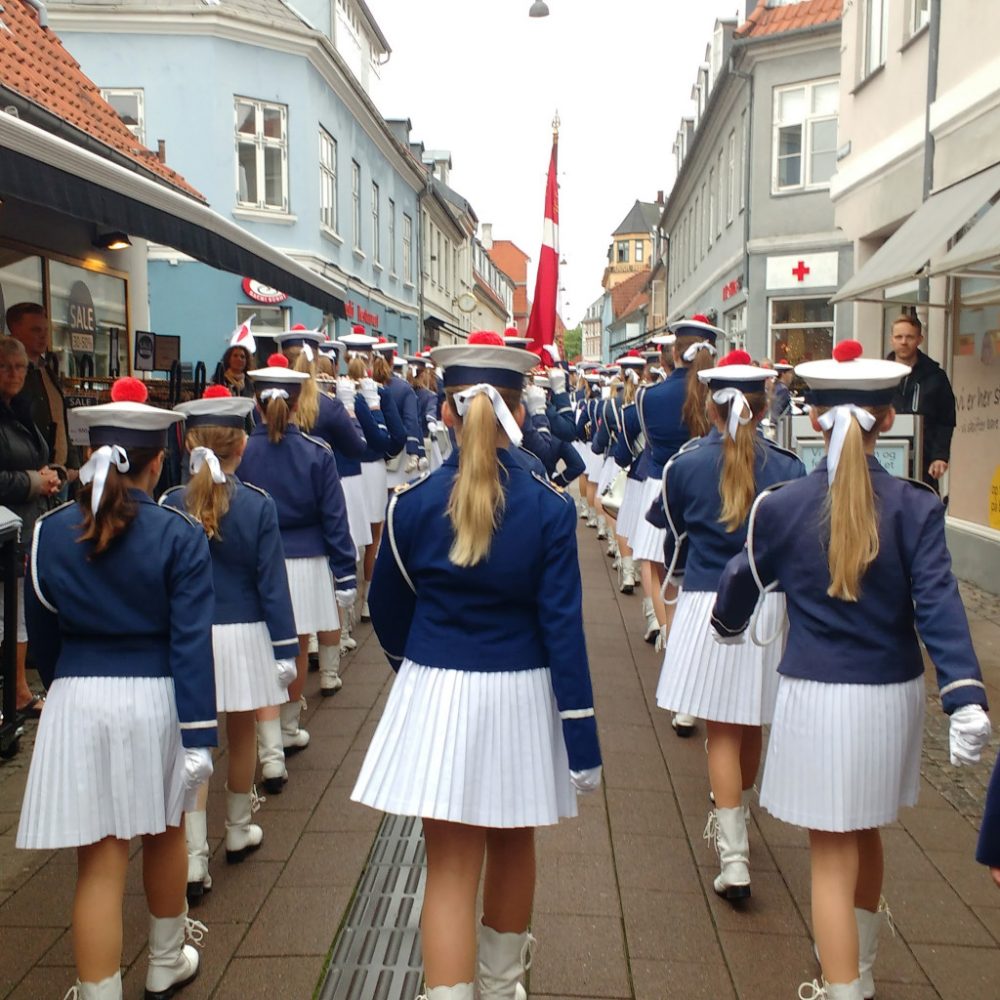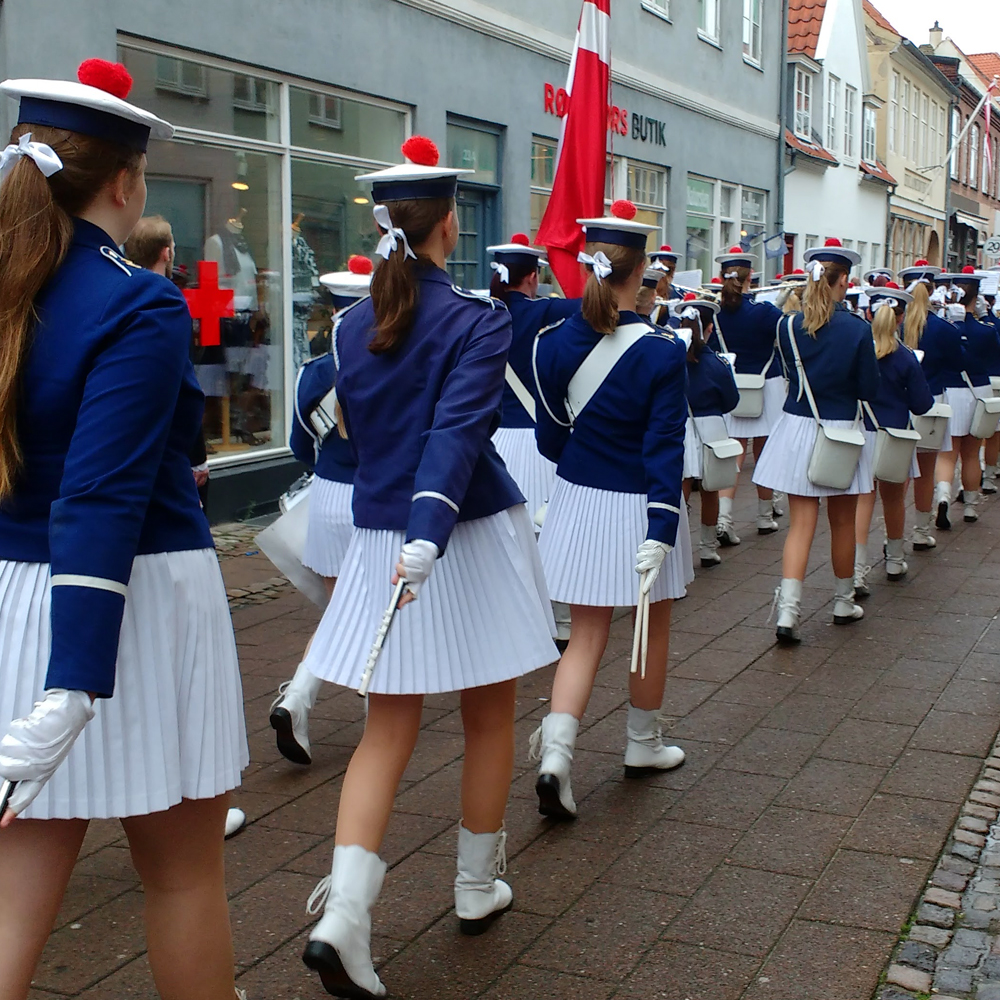LFS1 : NEW TEASER!
New Teaser Out Now!
continue reading arrow_forwardIn the summer of 2017 Lars Kynde and I worked in Copenhagen on Vandmand: a composition for tonewheel and 30 girls of the Elsinore Girls Marching Band. In this blog I post the process of this project.
29062017
INTRO
There are no solo players in a marching band, their strength lies in the group as one. Instead of having one group and many different instruments, in this project many performers play one instrument.
Imagine a projection of one tonewheel on the floor as the instrument for 30 performers. This group moving in a manner that remind you of something between synchronized swimmers and a military parade as part of a musical piece sonifying the light shining above them.
This summer Lars Kynde and I start working on a research on graphical sound and composition for the Elsinore Girls Marching Band in Copenhagen as they expressed their wish to learn new instruments. As part of their 60th anniversary this piece will be presented for the first time 1st of september 2017 in the Danish Museum of Science and Technology.
Although I’m working with my tonehweel instrument for some years now, I never had the chance to make a piece for a group or to calculate the musical scale of the tonewheel. Having the chance to work with Lars and this group makes it possible for me to get a deeper understanding of the mathematics behind harmony, develop performance and notation strategies.
The composition for this piece is made up of very clear different composition layers. The first layer is flat and the general base of piece, it is the design of the tonewheel that expresses the timbre and tonality scale. The second layer adds position of the performers, that defines tone and harmony. The third layer adds time and movement that determines dynamics.
All these different layers need to be examined and brought together in a score with special developed graphical notation method that can be red and understood by a 9 year old.
—
During the month I will stay and work in the wonderful collective work space Illutron.
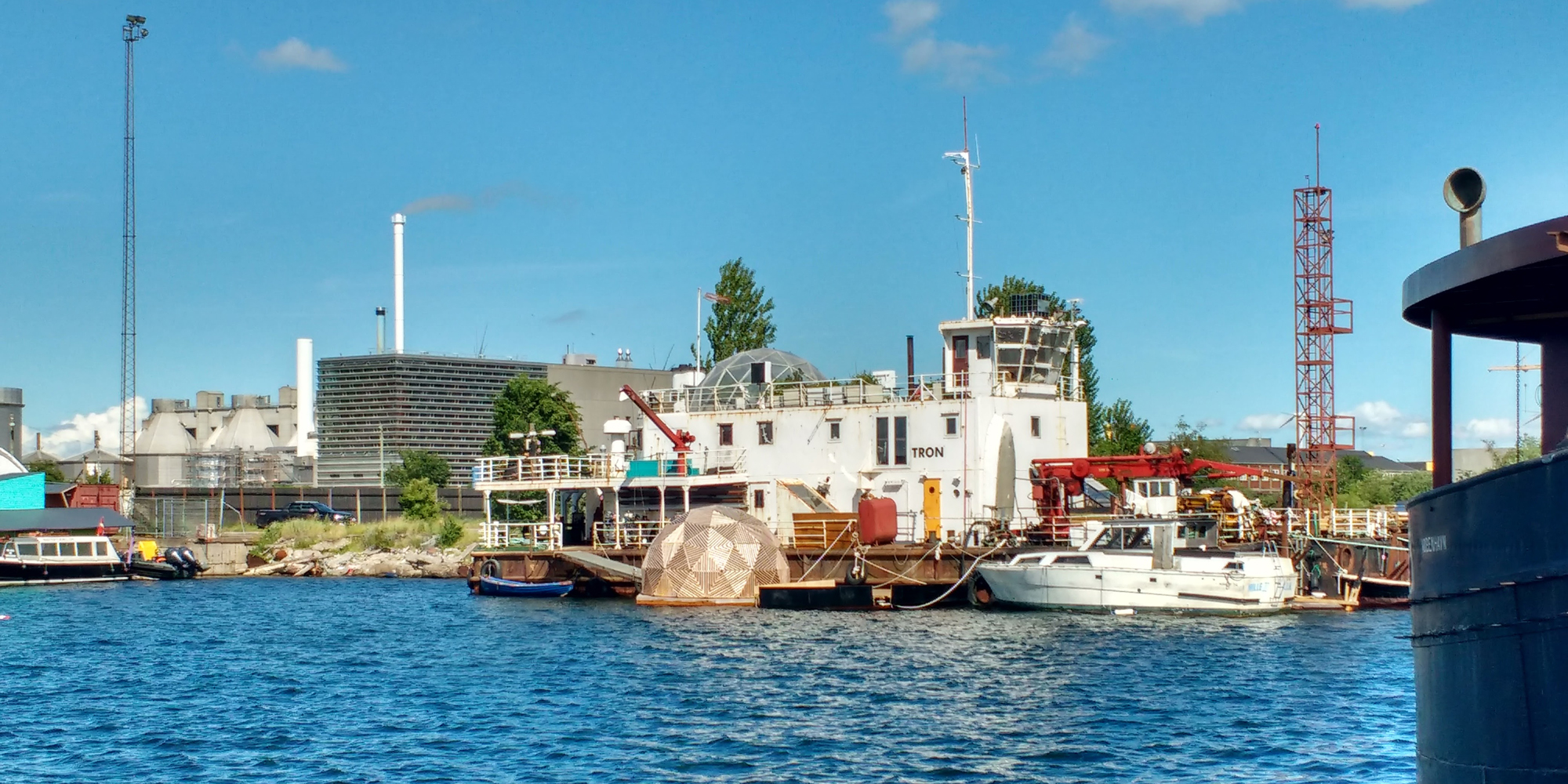
07072017
#1 STARTING PROJECT VANDMAND
As part of their year closing, the Elsinore Girls Marching Band were parading their city’s streets and playing their standard repertoire. Lars and I travelled to Helsingør to see what they’re trained for. It might be worth noting that this Harmony travelled the world for shows and contests. You can clearly see their disciplined training and strong group dependence.
Afterwards we went to visit the Technical Museum where the performance will take place.
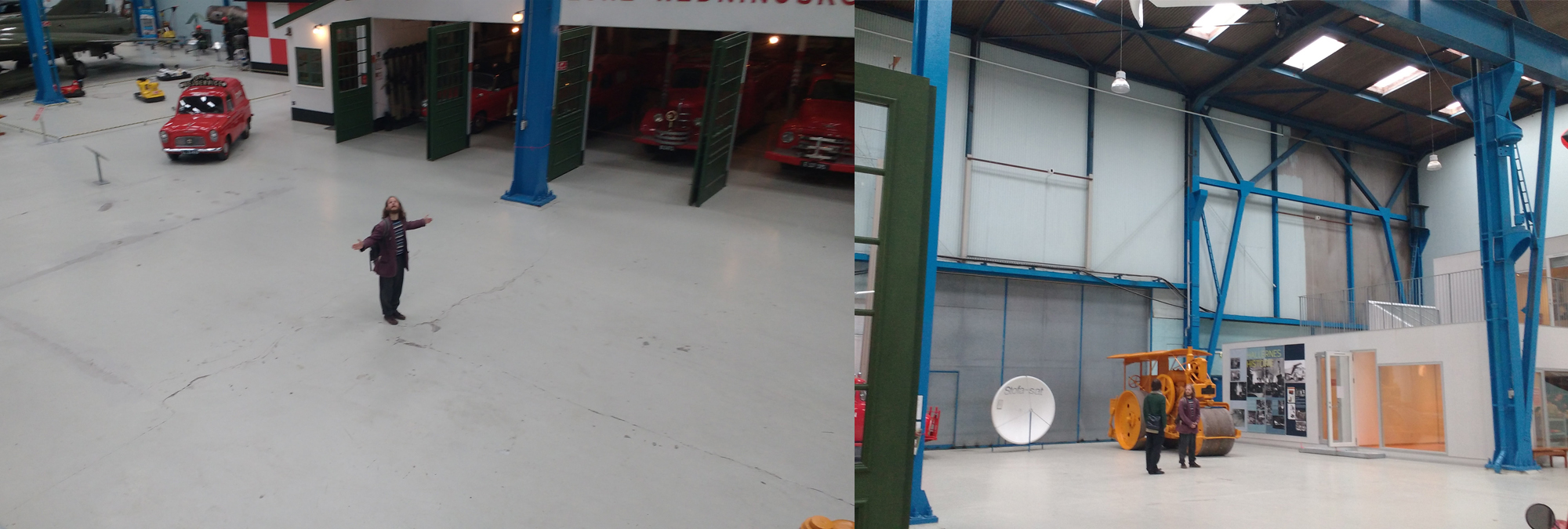
LISTENING PATTERNS
We started designing and trying out our first tonewheel patterns. For the purpose Lars develops a program, WheelGenerator, that helps us creating patterns based on precisely calculated harmonies and glissandos.
Using the Lumisonics App that Wolfgang Bittner is developing at the moment, makes it possible to listen to the patterns we’re sketching.
The video shortly shows the first attempts of one glissando catched in one pattern consisting 5 tracks.
PROTOTYPING HAS STARTED
Also, we need to start making the instruments the girls will play.
Our plan is to have 25 to 30 girls performing. Each girl will get a light sensor in the one hand and a small speaker in the other hand. Both receiver hand and transmitter hand are parameters for the composition. Coming week we will focus on the the hand- and body movement in the tonewheel projection.
In this video I’m using the dimming light of my old laptop screen as a sound source. It shows shortly how movement can change amplitude.
10072017
#2 ORGAN
Last week Lars and I got the fantastic opportunity to play together with a church organ.
The timbre of the organ and the tonewheel fits very well together, while the characteristics of the rigid organ relative to the fluidity of the Lumisonic Rotera complement each other very nicely.
For the occasion of a ceremony Lars desinged an lasercutted a tiny tonewheel with which I did an improvised performance with the organ player (not so easy playing in daylight!).
The video shows an impression of the performance, and Lars explains the design for the tonewheel with the noise of it is being lasercut in the background:
16072017
#3 SOUND EFFECTS
We are testing hand movement sound effects:
Interesting I find when theory becomes sensible.
the pattern we use is a second attempt of the design (more about the final designs later in this post). Like explained in the video above, this patterns has a set of 5 tones that together form a harmony. In the design of this wheel we heared overtones appearing as soon multiple tones in one harmony of the pattern were ‘activated’.
When we move you can hear the pitch shifting. This gets nicely dissonant when we move in opposite directions. This reminded us of wales singing.
17072017
#4 EVERYTHING TIMES 30!
Final prototype and production time!
The costumes of the girls comes with white gloves. We add hidden electronics: small lightsensors in their one hand, the 9v battery and little amplifier in a pocket pinned inside their jacket and a speaker in their other hand.
We already realize this is a temporary solution. This month we won’t have the possibility to test the instruments on the girls and we can only roughly estimate if the tiny amplifier will do the job with the final height of light and performance location.
–
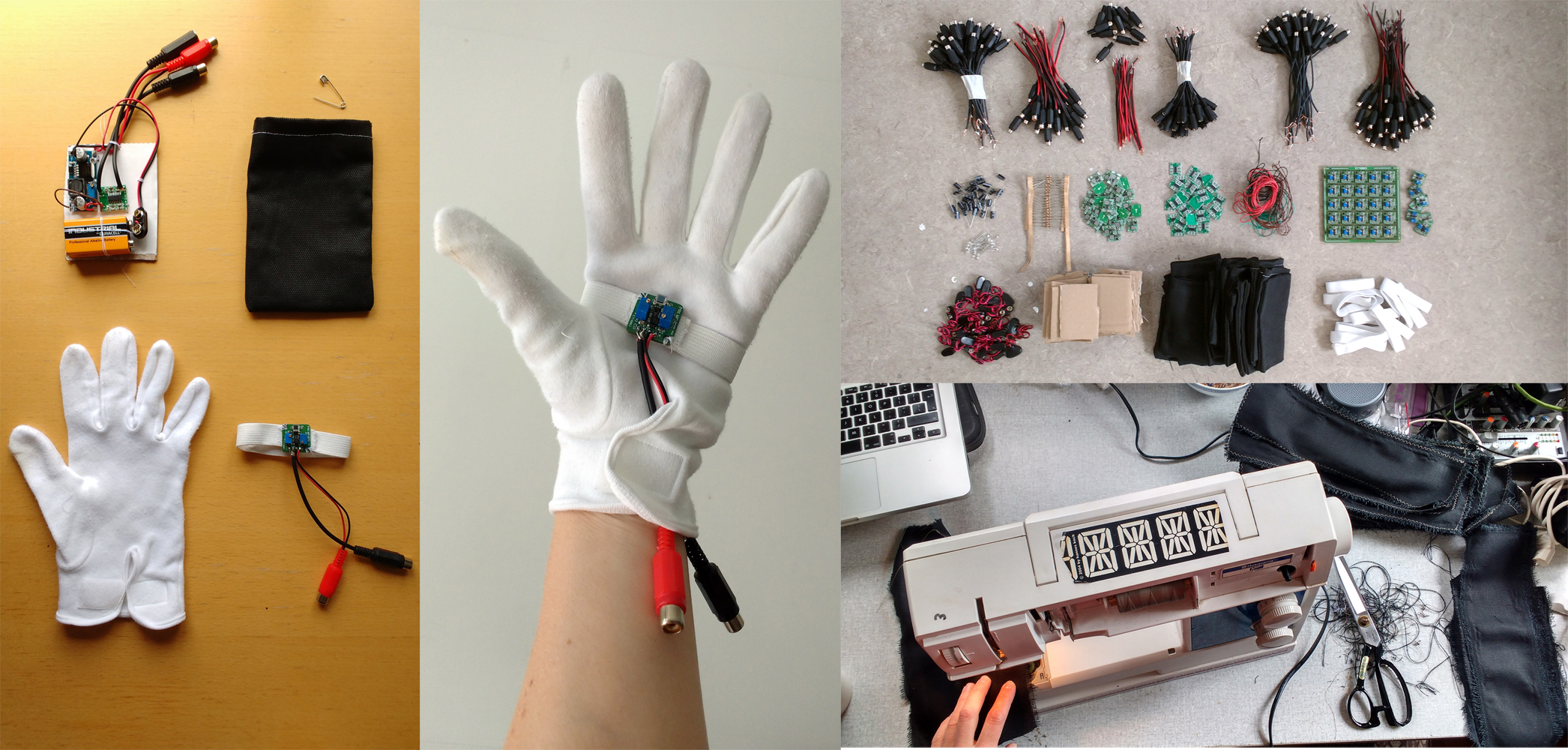
Thirty girls, thirty instruments to be build!
Hopefully in a later stage we’ll find resources and time to make proper casing,
but for now it is solder time!
18072017
#5 TOWARDS FINAL PATTERN
Last 3 weeks we’ve had some interesting development designing harmonies in graphical sound, with glissandos.
The first attempt in the first week was a continuous pattern, not separated tracks, cut with the DIY CNC machine at Illutron.
–
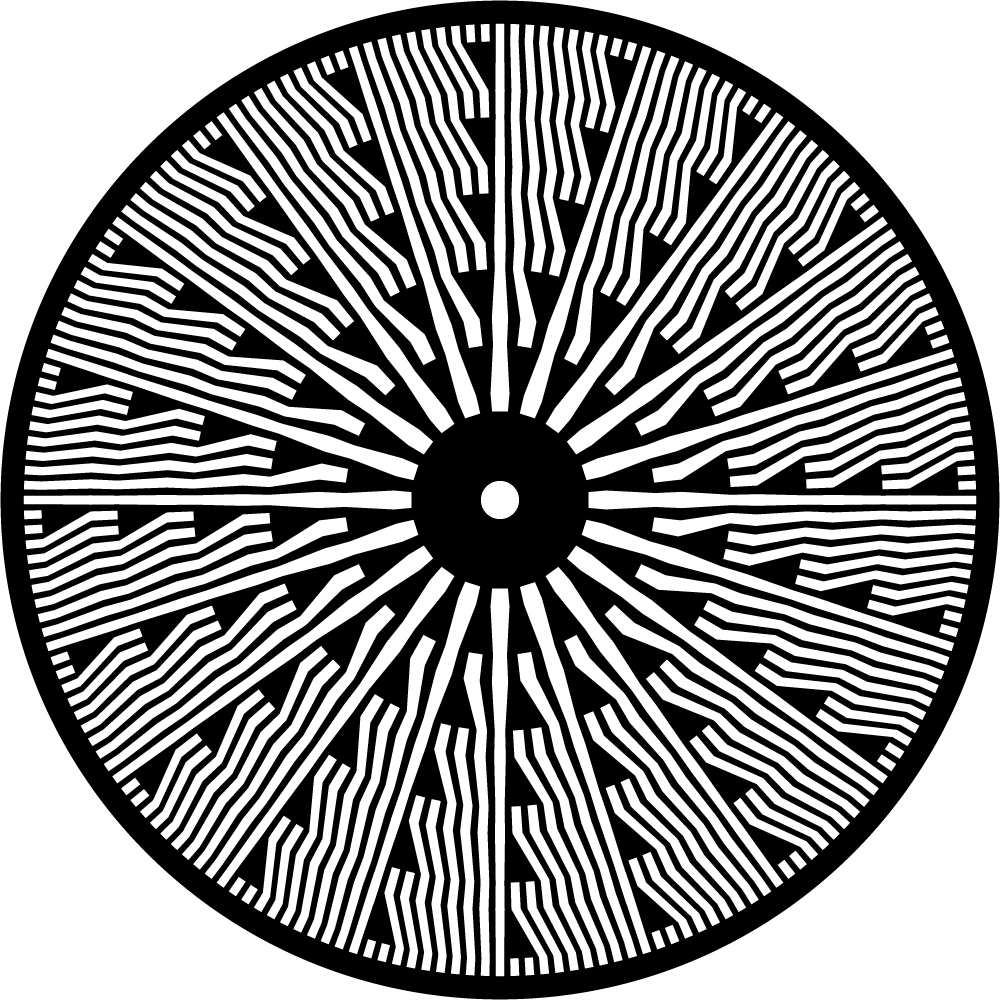
–
The 2nd design ‘flower‘ was designed simultaneously with the wheel created for the ceremony with the church organ. Both you can hear in the previous posts. To make the wheel more sturdy and give more direction for the girls’ position we decided to divide the pattern in 5 tracks. The first (inner) track is calculated in the way that it fits all following harmonies, and the 4 following tracks has each 2 tones that fit the harmony, with 5 notes in between that form a glissando.
It has a basic frequency of 8 a round, that you can hear pretty well in the glissandos parts (the diagonal-ish lines) as a fast rattle/rhythm.
–
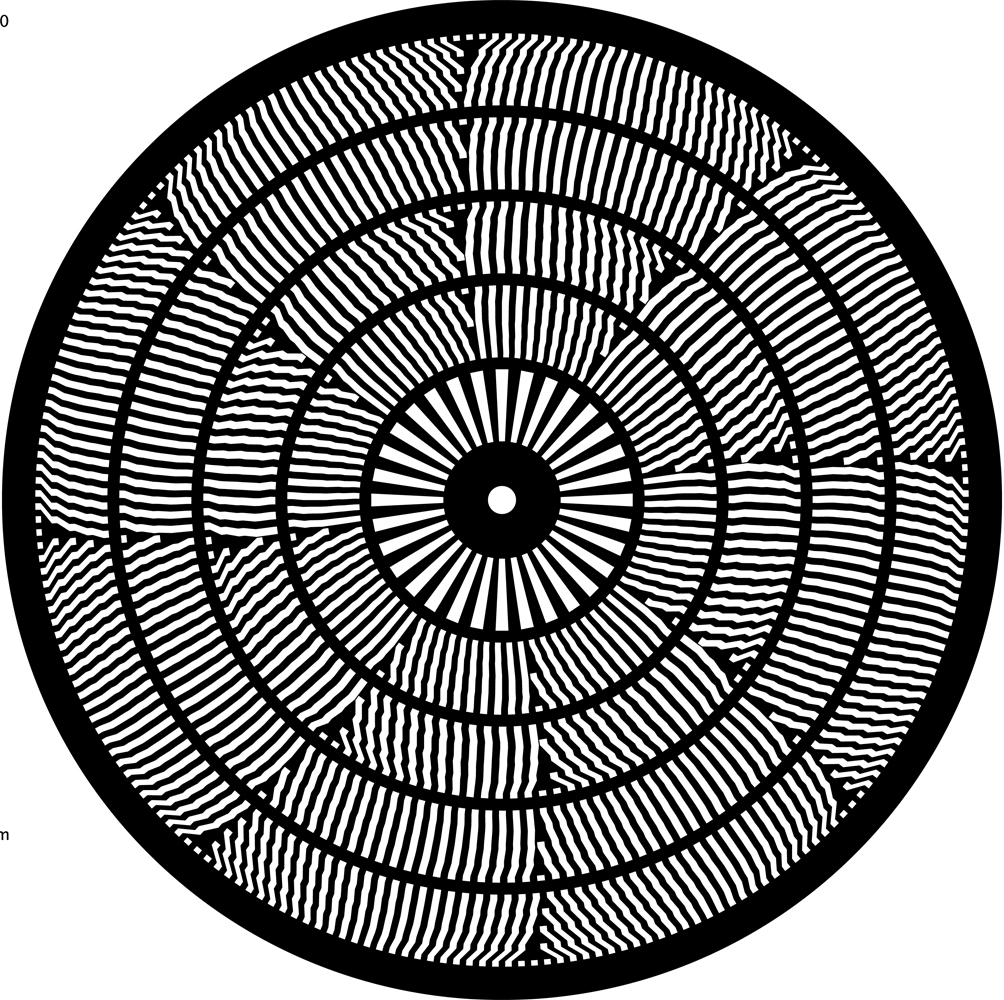
–
Some changes are made in the newest wheel, which is slightly referring to the tonewheel disks used in Murzin’s A.N.S. synthesizer. Before, the straight slides went from one tone to the other and caused ‘beats’ in the pattern. We changed that for micro steps in between notes. A microtonal glissando?
We decided to have 3 notes each track fitting different harmonies. The inner track is still corresponding to all harmonies that can be created. In between the notes is now a small glissando made out of 3 to 5 overlapping notes. These glissandos are made a bit tinier, and appear grey-ish when the spinning wheel is projected.
–
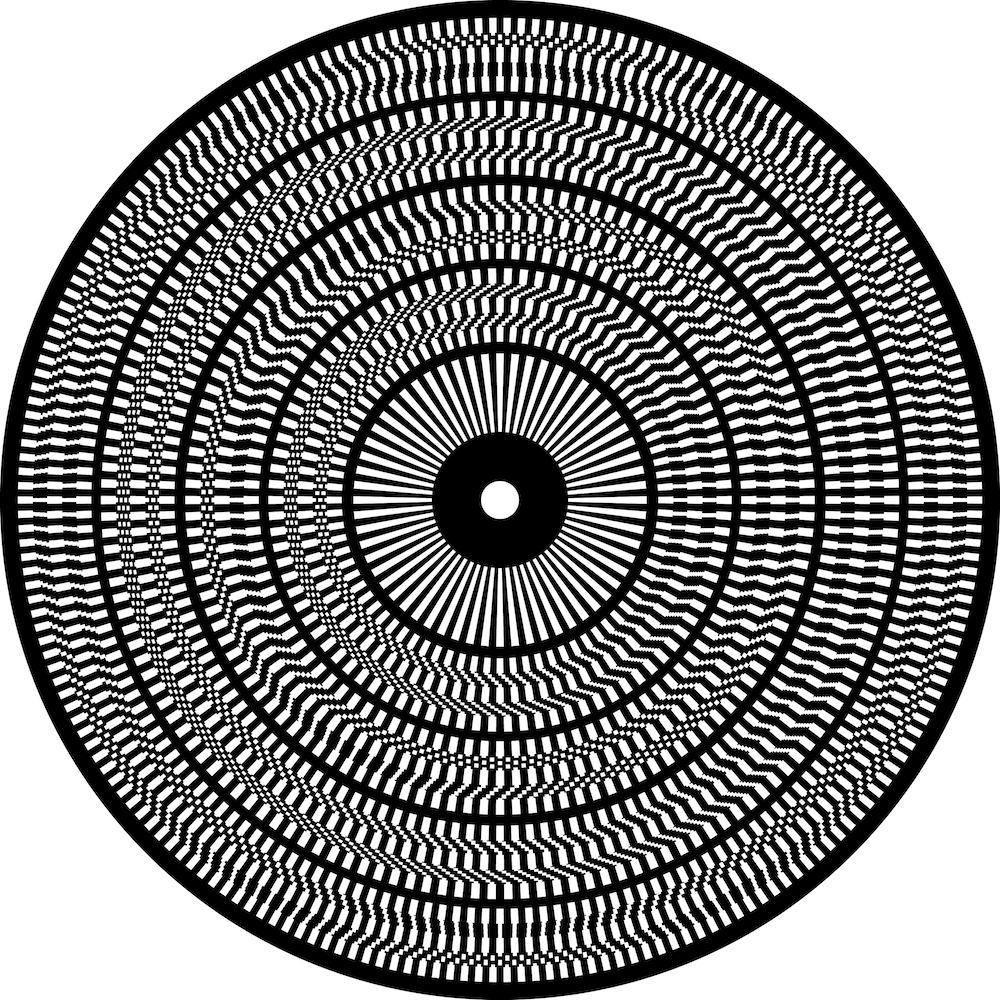
–
Here it comes straight from the lasercutting machine at Fablab RUC in Roskilde:
This is how it sounded when first tested:
More and more we realise the sounds that evolve from the pattern design in combination with the behaviour of the spinning wheel and the different movements, are subtle, very fluid and a bit sluggish. It reminds us of sounds of the underwater world.
25072017
#8 VANDMAND
Lars is working on two pieces for the Elsinore Marching Band. The other piece –
Brandmand – involves his PulseJet Instrument.
Brandmand (Fireman) is the dangerous jellyfish, that leaves you with fire blisters when touched. Vandmand (waterman) is the kinder kind of jellyfish and comes with nice round patterns of genitals on its head.
Vandmand is a little story about the sea and its inhabitants.
–
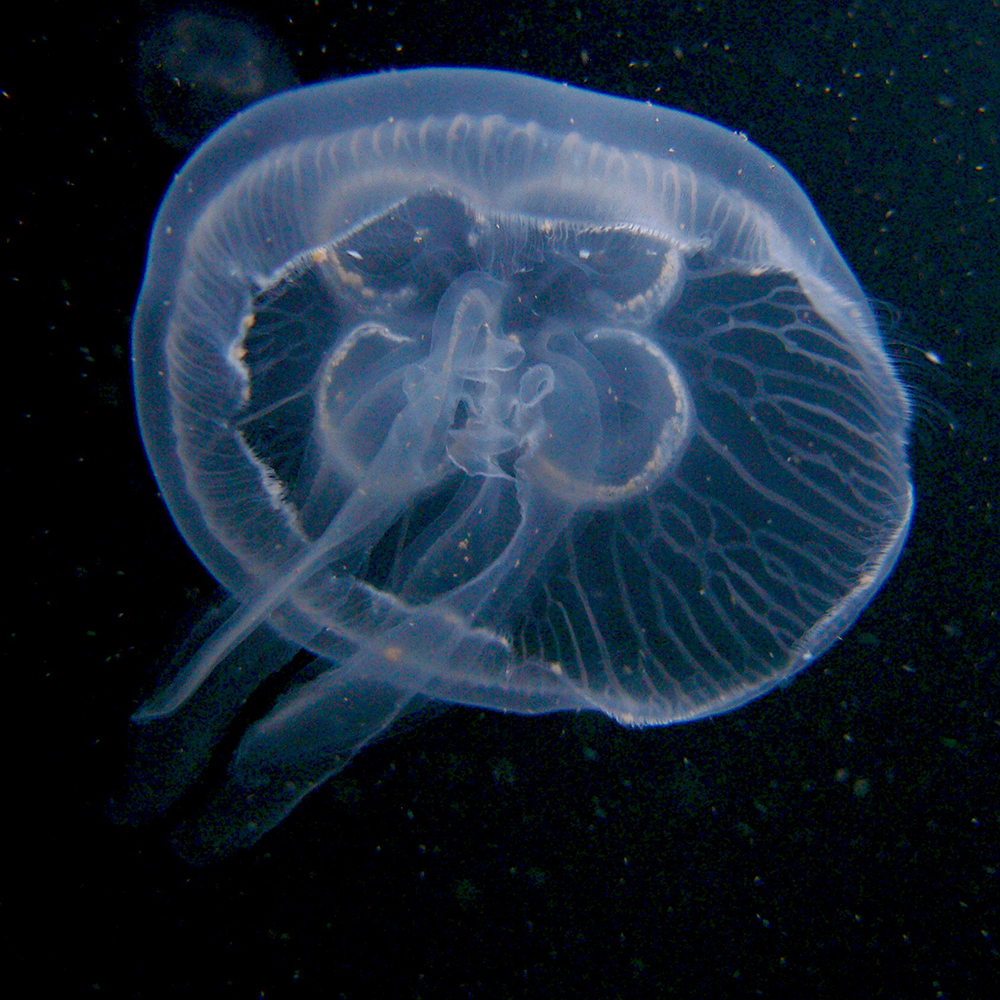
21072017
#7 NOTATION
–
Now the wheel design is decided and the library of sounds and movements is filling up, we start working on the score and its notation.
–
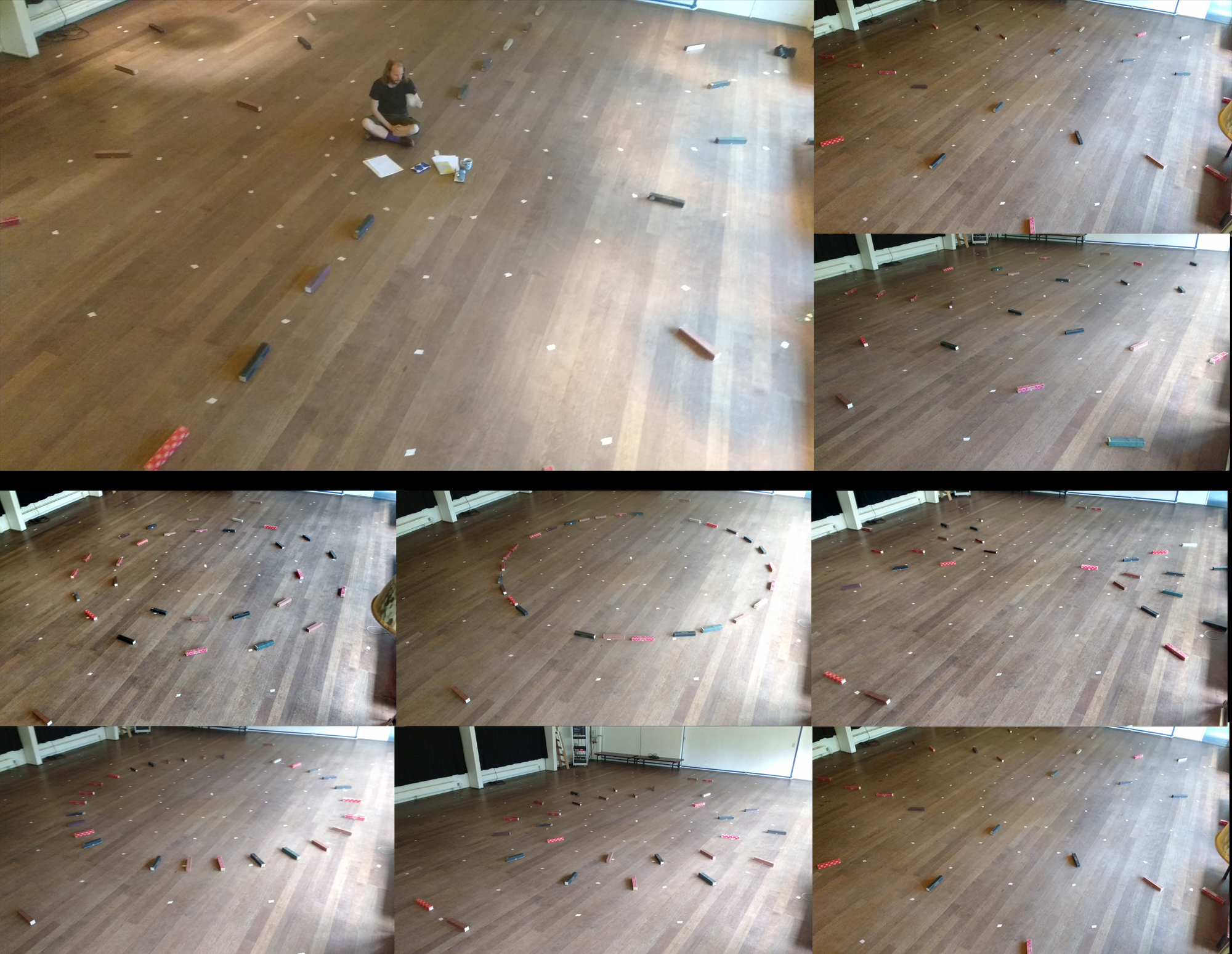
Traditional notation doesn’t work for this instrument, but how do make a score for a spacial piece with a light&sound instrument like this, for 30 individual girls and same time as a group, and that a nine year old can understand?
(and besides, as a former graphic designer I want it to be visually appealing as well).
It needs to describe all the traditional dynamics like crescendo, glissando and forte, time and tone, but also position of hand, body and speaker direction.
We are experimenting with forms and color, trying to find simple and clear forms to show accurately what to do.
A legenda that we came up with:
–
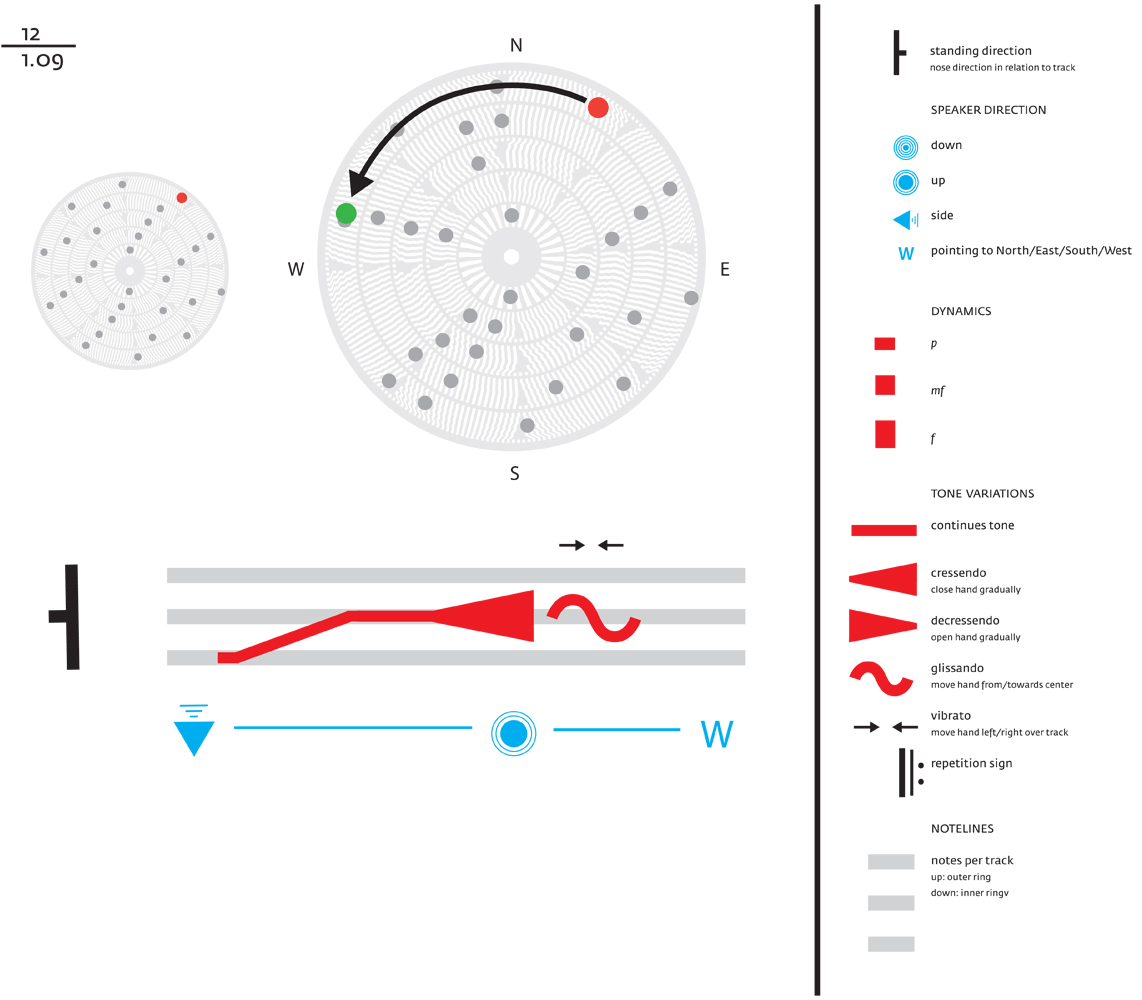
Every girl gets her own score written out. It will look something like this:
–
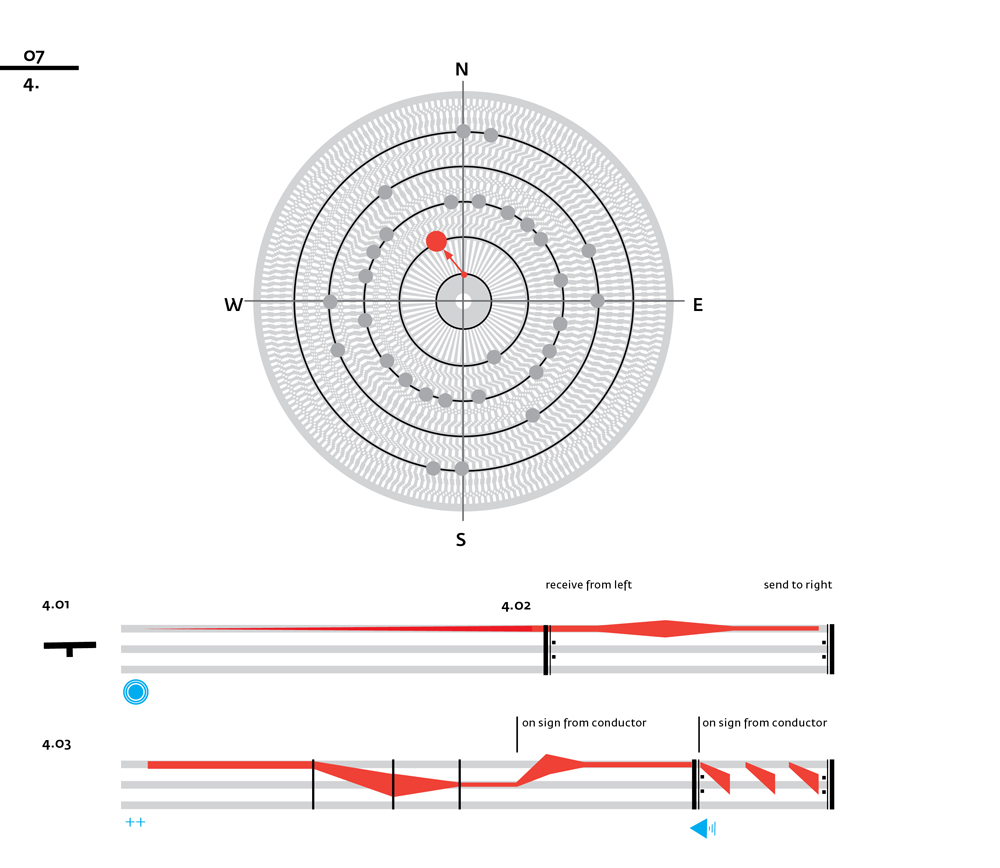
30082017
#8 TWO REHEARSALS
–
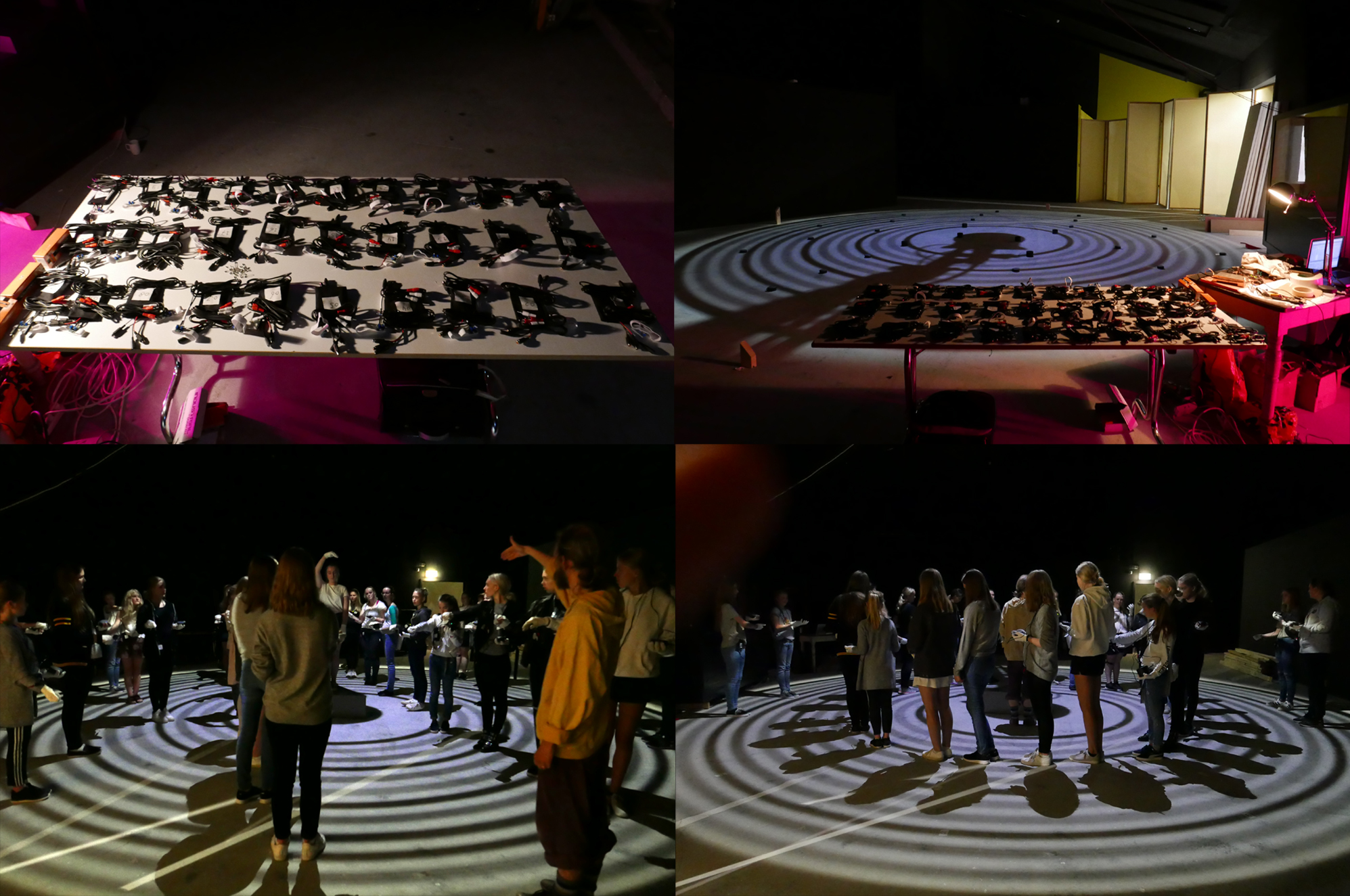
Although they got trained almost daily for months to learn playing their traditional repertoire, we had to deal with only 2 rehearsals to learn 30 teenager girls and a conductor an avantgarde composition ánd a new instrument!
Besides that for us it was the first test scenario for both executing the composition as well testing the hardware: how does this composition actually work in real life, musically and physically? How do the instruments sustain? Are they strong enough? Is the projection strong enough?
We decided early enough to learn the group the basic movements so they could perform a simplified version of the piece. I think they did a great job.
At the PROJECT PAGE of VANDMAND you’ll find documentation of the first performance.
//
This research residency is kindly supported by Stroom the Hague, Fonds PodiumKunsten and the Danish Art Foundation.
